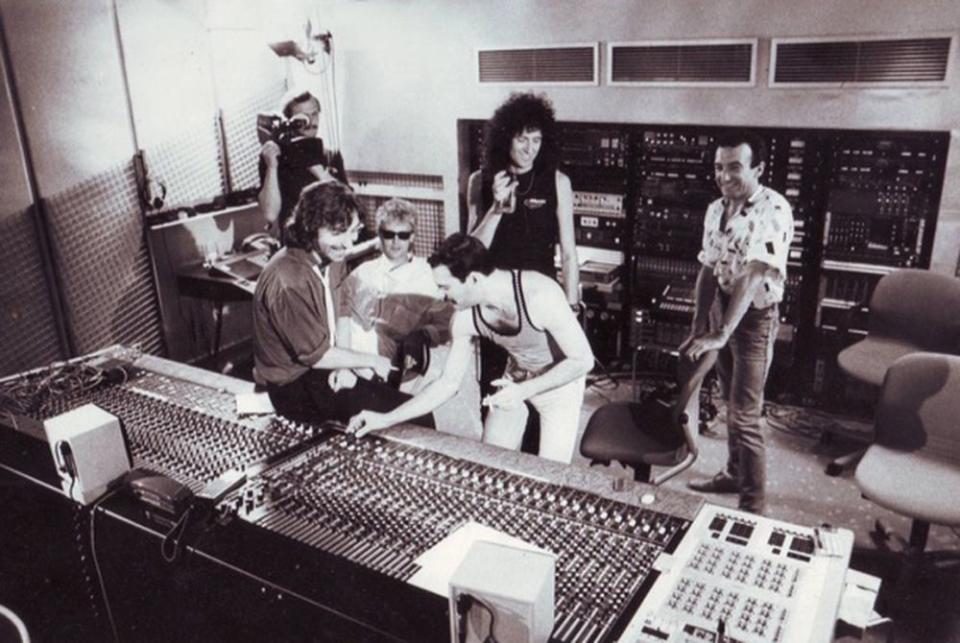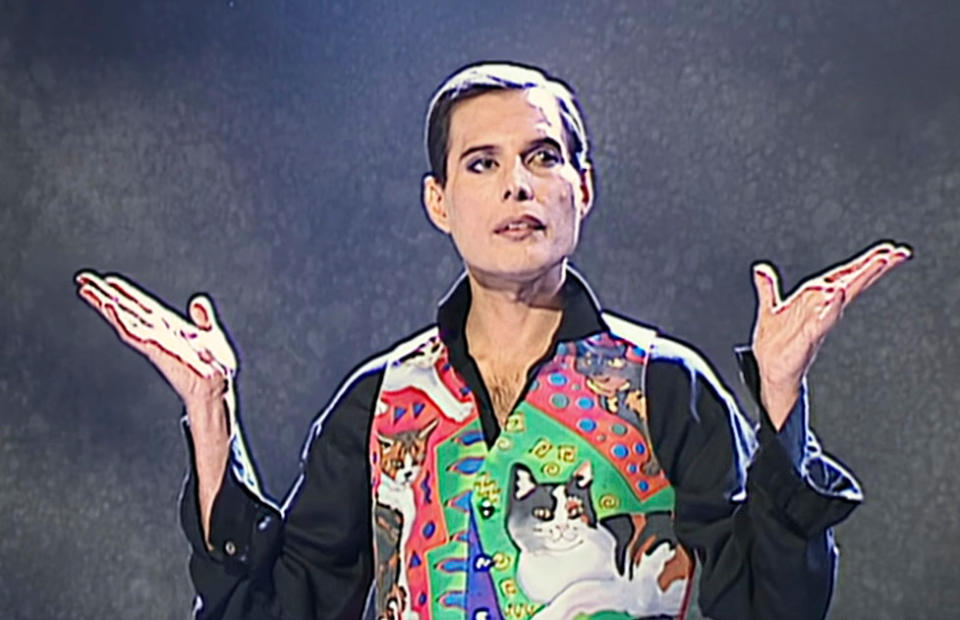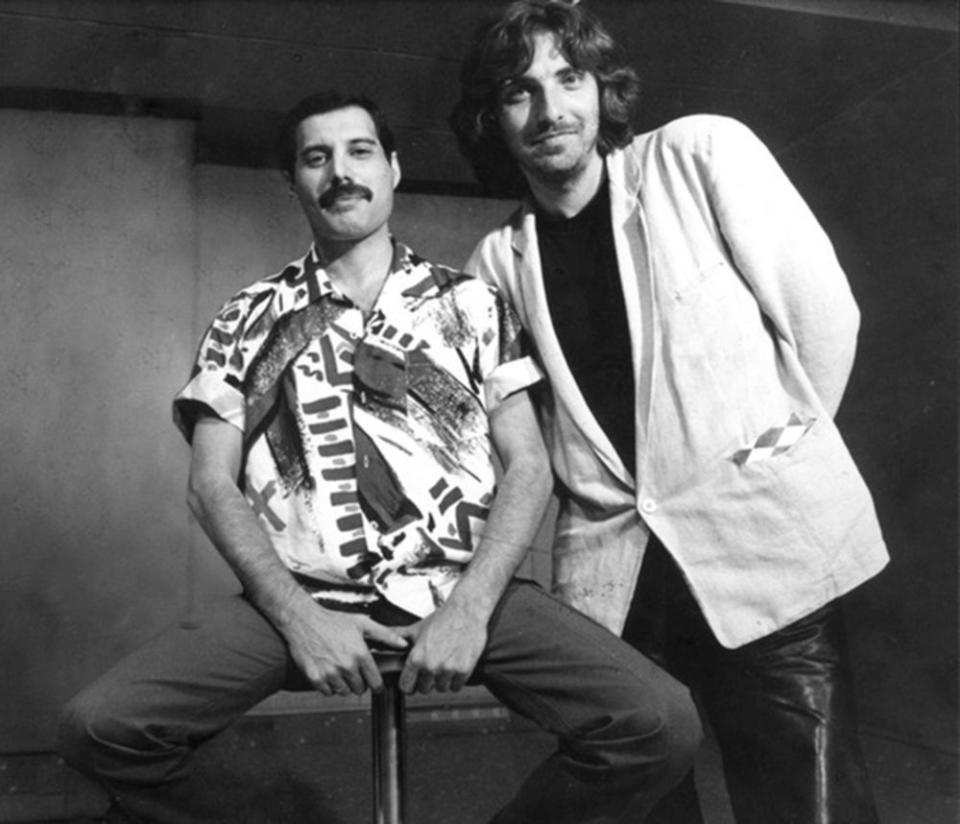Freddie Mercury's Final Bow: Director Rudi Dolezal Recalls the Queen Legend's Poignant Last Video
By early 1991, AIDS had robbed Freddie Mercury of the raw power that made him one of the most electrifying stars in rock. Though the Queen frontman had not confirmed his diagnosis to the public — nor would he until the day before he succumbed on Nov. 24 at the age of 45 — his frail figure made the illness impossible to conceal. Aware that his time was short, he knew it was time to say goodbye to his millions of fans.
No longer able to perform in public, the opportunity came while filming the music video for “These Are the Days of Our Lives.” The delicate ballad is a winsome look at years gone by, and its melancholy lyrics are made extra poignant by the fragile voice that delivers them. The song would be among the last the band would issue in Mercury’s lifetime, and the video would be his final bow.
For help, he called upon Rudi Dolezal, the world-renowned Austrian director who had worked on dozens of music videos for Queen, as well as visuals for the Rolling Stones, Frank Zappa, and Tom Waits. “He knew how ill he was, and that this was the last time he’d ever be in front of a camera,” Dolezal tells PEOPLE.
The filmmaker first met Mercury more than a decade before, when he was a young journalist interviewing the band for German television. “When the interview was over I said, ‘If you need to have a good director for one of your next videos, give me a call.’”
Though the remark was tongue-in-cheek, he would get his chance. To his shock, he got a call from Queen’s manager in 1985, asking if he could shoot the video to their new single, “One Vision,” during a brief window when the band were in a Munich recording studio.

That forged the start of a fruitful relationship between Dolezal and the band — and particularly with Mercury. “Freddie and I developed a language together. He was very, very, fast. He was very intelligent, very clever, and you had to be always on your toes. He was very impatient. He wasn’t even finishing telling you what he wanted, but he wanted it that moment!”
However, Mercury’s high standards for others also applied to himself. “If I had a shoot where I said, ‘Freddie, you have to get up at 5 a.m. because I want to have the sun going up behind you,’ he was there 5 a.m.”
Their professional ties soon turned into a warm personal relationship. Dolezal remembers one night as a party wound down at Mercury’s house, when the two chatted in the singer’s lounge surrounded by framed gold records. “He said, ‘You see all this gold? Why do you think I’m still doing this? I do it because I want to know if I’m still number one when I’m behind the microphone That’s the kick. It’s successful because I proved it to myself,’” Dolezal recalls.
But the excellence came with a cost for Mercury. “He also told me, ‘For each step that you go up the ladder of success, you have to leave something behind that you love. You will lose friends, you will maybe even lose family, that’s the price you have to pay.’”
RELATED VIDEO: Mamma Mia, Mamma Mia! Queen’s ‘Bohemian Rhapsody’ Is the Most-Streamed Song from the 20th Century
Dolezal knew that Mercury was unwell when he arrived to shoot the video for “These Are the Days of Our Lives” video in May 1991, but the friends did their best to carry on as normal.
“AIDS was never a topic. We never discussed it. He didn’t want to talk about it. Most of the people didn’t even 100 percent know if he had it, apart from the band and a few people in the inner circle,” says Dolezal, now 61. “He always said, ‘I don’t want to put any burden on other people by telling them my tragedy.’”
RELATED: Inside Freddie Mercury’s Final Days and Death at 45 from AIDS

The director filmed in black and white in a desperate attempt to conceal Mercury’s physical deterioration, but his emaciated frame is painfully apparent. “The bottom of his foot was a completely open wound,” says Dolezal. “He must have had terrible pain, but you don’t see that. You just see a man and his destiny. Regardless [of] whether he was in pain or not, he always delivered. He didn’t want any special treatment. He was so brave. In retrospect, it would have been so easy to be a diva, but he wasn’t like that.”
For more on Freddie Mercury’s extraordinary life and the true story behind Bohemian Rhapsody, pick up the latest issue of PEOPLE, on newsstands Friday.
Dolezal had been warned to keep things speedy because of the performer’s ailing health, but just before the shoot wrapped Mercury requested one more take for the last lyrics of the song: Those days are gone now but one thing’s still true / When I look and I find I still love you. On the last line, he summons all his strength for a final heroic pose before collapsing into himself with a soft laugh. Staring through the camera, he whispers a final “I still love you” before snapping his fingers, walking out of frame with a flourish.
“In these last few seconds of that song, he gives us a resume of his whole life: ‘I was a big superstar, but don’t take it too seriously.’ And then, ‘I still love you,’ which is to the fans. Then he walks out of life. Even in his last moments, he planned his exit artistically. That’s how he wanted it to be,” Dolezal tells PEOPLE.

In the 27 years since Mercury’s death, Dolezal has paid tribute to his friend with the 2000 Grammy-nominated documentary, Freddie Mercury: The Untold Story, and an upcoming memoir of their time together. In all of his projects, he remembers the late legend’s words of advice. “He said, ‘Rudi, never try to be second best. Always go for the impossible.’”

